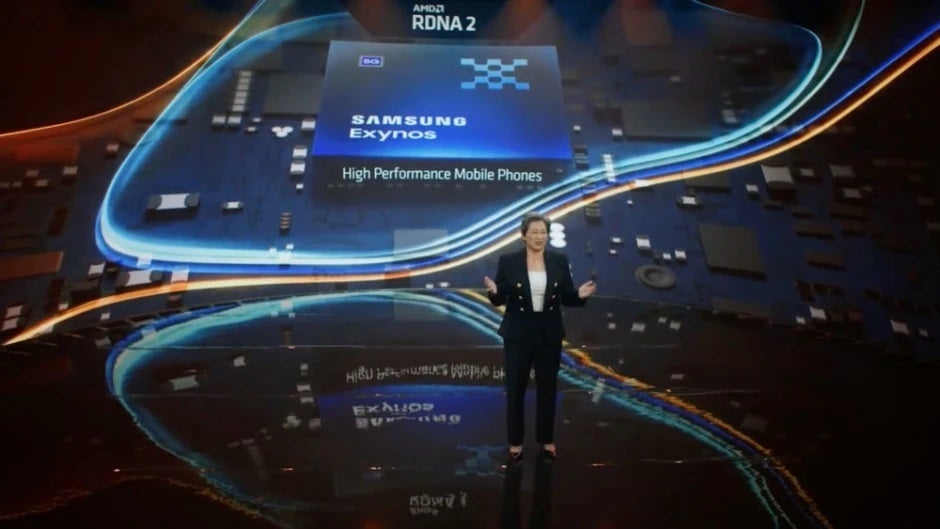
The collaboration between Samsung and AMD has brought us countless leaks and rumors during the past few months. Back in February, the internet exploded after a tipster posted that Samsung will unveil GPU co-developed with AMD later this year.
Two months later another leak fueled the stones of the rumor mill. The alleged Exynos 2200 chip with AMD GPU was touted to rival Apple M1. In early June Samsung officially confirmed the first Exynos chip with AMD GPU – making things even more exciting.
Now we have another leak regarding the new and hot Exynos chip, this time from the Chinese network Weibo. An image of what seems to be an advertisement for the ray-tracing capabilities of the new Exynos chip briefly appeared on the network just to be deleted soon after.
Those of you who are fluent in Chinese can translate the text on the picture, for all others (like ourselves) there’s always Google Translate. It says something like this in the title “Ray tracing technology brings the image to life.”The two images of a battlefield speak for themselves. The fine print underneath is also pretty interesting. “Shutterstock image for reference only.” And then “The product pictures, models, data, performance, specifications, etc. in this advertisement are for reference only. Unless otherwise specified, the numbers in this advertisement are Samsung’s internal testing data.”
All this looks pretty close to the text you would normally find in an advertisement like this. The fact that the image was taken down pretty fast also speaks volumes.
What is ray tracing?
Ray tracing is an algorithm that renders lighting in games and other computer-generated images. It’s a much more realistic approach that yields spectacular results but it’s also very hardware-hungry. This is also the reason this tech is entering the gaming industry just now – in the past couple of years, despite first appearing back in 1968.
The advances in modern hardware allowed dedicated ray-tracing cores to be implemented in computer graphics cards and the whole ray-tracing craze was unleashed. Games do look better with ray-tracing but the toll on performance can be huge.
Ray tracing on mobile devices
Bringing ray tracing to mobile devices is the next logical step, as we’re using them constantly. Gaming on mobile devices has also grown exponentially in the past few years – according to techjury games account for 43% of all smartphone use.
The fact that Samsung and AMD are aiming to bring this technology to your next Galaxy devices (presumably the Samsung Galaxy S22) goes to show that the silicon will be pretty powerful.
This seems to be the case – an alleged benchmark of AMD Exynos GPU showed it’s on par with Apple’s A14, and then there was another leaked benchmark comparing the Galaxy S21 with the Exynos 2200-laden Galaxy S22.
Our take
We’re not absolutely sure about ray tracing benefits on a 6-7-inch display. With global illumination algorithms the larger the scene, the bigger the impact. We’re not saying it won’t make a difference, only it probably won’t be as breathtaking as you imagine.
Another thing to consider is the actual support for the technology in games. This was a huge issue when the technology came to gaming desktops back in 2019. Only a handful of games supported it.
But let’s talk Exynos and Samsung. The Korean company came under fire for using Exynos chips in the past few Galaxy generations as they were somewhat inferior to their Snapdragon counterparts.
With the Exynos 2200 and the AMD partnership, Samsung aims not only to wow the world with the first ray tracing mobile GPU but also to redeem itself and give Qualcomm a run for its money. And by the looks of it, the Korean company might just do so. Exciting times ahead!



